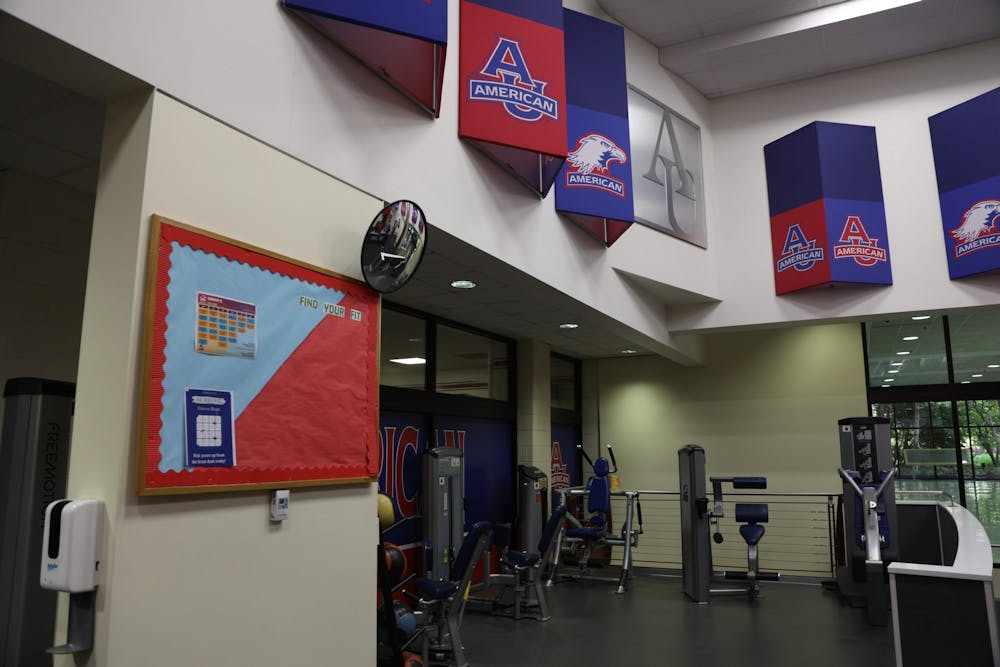American University students can enjoy two gyms on campus equipped with a lifting floor, numerous machines and a separate cardio level, alongside classes such as yoga or group cycling workouts for students. To some people, this sounds like a slice of heaven but, for many looking to start, it can be hard to know where in the gym to begin.
For those looking to get acquainted, here are The Eagle’s tips and tricks for fitness beginners:
What do you want out of the gym?
First, it’s most important to acknowledge what exactly you want to get out of going to the gym. For weight loss or a leaner look, cardio and high-intensity exercises will be your friend. For strength and muscle mass improvement, you may look into weight lifting. If you’re looking to boost your overall health while staying active and strong, a combination of both is a perfect place to start.
Getting comfortable in the gym takes time but it’s key to remember that everyone starts somewhere. Freshman Ella Waidalowski said she started going to the gym with a friend to help her gain confidence until she felt comfortable going on her own.
"We worked together to make a workout plan and it made it a lot easier for me,” Waidalowski said. “I actually want to go to the gym now."
Plan out your workout
Freshman Cassie Andradottir said that putting together a plan of basic exercises she liked and building in an hour for the gym every day helps her get up and go. Having a routine is especially helpful for students living on campus since it's only a five-minute walk to the gym and everyone has a membership.
"It's hard to get going, but once you're there and you get to release pent-up energy and stress from school and put it into something positive, you feel a lot better," freshman Matthew Schopmeyer said.
Cardio can be another great way to start if you’re nervous, but don't be afraid to try each exercise. You don't need a lot of different routines to see results; if you stick to compound exercises and add in a few extra — like bicep curls or tricep extensions to focus individual muscle groups — you’ll have yourself a workout plan. Compound exercises are exercises that work multiple muscle groups at the same time, such as squats which work the quadriceps, glutes and calves at once.
Work on your form
To work on these exercises, following fitness accounts on Instagram and watching demonstrations on Youtube can be great ways to work on your form. Not only can proper form lower your risk of injury, but it also allows you to move efficiently, increases your performance and enables a full range of motion.
Create a routine
A basic 6-day workout plan might include:
Day 1- Leg day
Day 2- Pull day, which focuses on the back and biceps.
Day 3- Push day, which focuses on the chest and triceps, as well as shoulders.
Day 4- Core
Day 5- Cardio of your choice
Day 6- Rest
In addition to the compound exercises discussed earlier, your leg day could include the leg extension and curl machines, Bulgarian split squats and lunges. For your pull day, you could incorporate bicep curls, standing rows and rear delt flys, all of which are done on individual machines. Push day might also include tricep extensions, chest press machine, chest flies or lateral raises.
On each machine, you can find a basic overview with instructions for adjusting and using it. These guides can be helpful if you’re looking to try a new machine but are feeling uncertain and are sure to help you get the best workout possible.
These days can be changed and modified depending on your fitness goals, however, the most important is to have a rest day built into your week. Rest is essential to let your muscles recover and grow. Overexercising puts repetitive stress and strain on the muscles, increasing the risk of injury. Adequate stretching is imperative to prevent soreness and keep the muscles strong, flexible and healthy.
College is a great time to find yourself and get into new activities. If you've been waiting for a sign to get up and get in the gym, here it is.





